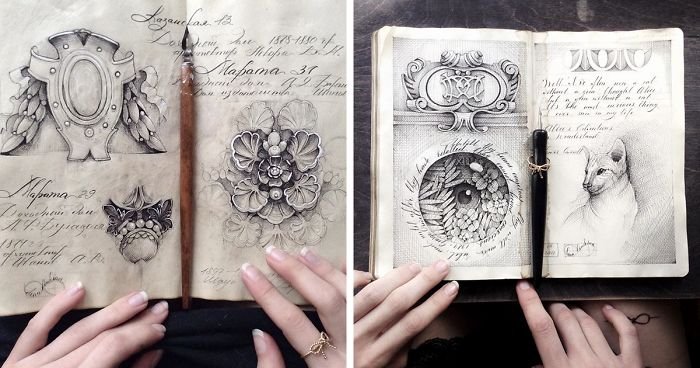Sketchbooks offer a unique window into the creative minds of artists, capturing raw ideas, experiments, and the foundations of masterpieces. For centuries, renowned artists have used sketchbooks to document their thoughts, observations, and evolving techniques. Exploring the sketchbooks of famous artists reveals not only their creative processes but also the intimate connection between practice and artistry.

Leonardo da Vinci: The Polymath’s Pages
Leonardo da Vinci’s sketchbooks stand as iconic examples of artistic and intellectual brilliance. These notebooks, filled with intricate drawings and annotations, blend art and science seamlessly.
- Focus on Anatomy: Leonardo’s detailed studies of the human body demonstrate his fascination with anatomy. His sketches of muscles, bones, and organs remain unrivaled in precision and beauty.
- Innovations and Inventions: Beyond art, his sketchbooks include designs for flying machines, hydraulic systems, and war devices, showcasing his inventive genius.
- Legacy: Today, these works are preserved in institutions like the British Library and inspire artists and scientists alike.
Vincent van Gogh: A Window into Emotion
Van Gogh’s sketchbooks are a poignant reflection of his artistic journey and emotional struggles. They chronicle his exploration of light, color, and composition.
- Nature Studies: Van Gogh filled his sketchbooks with landscapes, trees, and flowers, often creating preliminary studies for his iconic paintings.
- Expressive Lines: His bold, dynamic lines hint at the passion and intensity behind his work, emphasizing movement and emotion.
- Introspection: Through his sketches, Van Gogh revealed a deeply personal side, offering glimpses of his thoughts and challenges during his tumultuous life.
Frida Kahlo: Personal and Political
Frida Kahlo’s sketchbooks merge personal reflection with political commentary. Her pages often blur the line between art and diary.
- Self-Exploration: Kahlo’s sketches frequently depict her struggles with pain and identity. These raw, intimate works provide a deeper understanding of her resilience.
- Symbolism: Her use of vibrant symbols—like hearts, tears, and roots—reflects her unique artistic voice and Mexican heritage.
- Activism: Kahlo’s sketches occasionally include political motifs, aligning with her commitment to social justice and activism.
Michelangelo: Precision and Practice
Michelangelo’s sketchbooks reveal his dedication to mastering form and technique. Known for his perfectionism, his pages are filled with meticulous studies.
- Figure Studies: Michelangelo’s sketches of the human form display a profound understanding of anatomy, serving as studies for masterpieces like the Sistine Chapel ceiling.
- Chiaroscuro: His use of light and shadow in his sketches helped define the dramatic effects seen in his sculptures and paintings.
- Evolution: These pages also capture Michelangelo’s iterative process, illustrating how he refined his ideas over time.
Pablo Picasso: Constant Reinvention
Picasso’s sketchbooks highlight his restless creativity and constant evolution as an artist.
- Exploration of Styles: From realism to cubism, Picasso’s sketches showcase his journey through various artistic phases.
- Preparation for Masterpieces: Many of his preliminary drawings laid the groundwork for iconic works, including Guernica.
- Playfulness: Picasso’s sketchbooks often reveal a playful side, with whimsical doodles and spontaneous experiments.
Georgia O’Keeffe: The Essence of Nature
O’Keeffe’s sketchbooks offer a glimpse into her profound connection with nature and abstraction.
- Floral Studies: Her intricate flower sketches reflect her deep appreciation for organic forms, later translated into her bold paintings.
- Minimalism: Her sketches often simplify forms, emphasizing their essence over detail.
- Color Exploration: Though predominantly black and white, her sketches hint at the vibrant color palettes she used in her paintings.
Benefits of Studying Famous Sketchbooks
Aspiring artists can learn much from studying the sketchbooks of great masters:
- Technique: Observing their linework, shading, and composition provides valuable lessons in artistic fundamentals.
- Process: Sketchbooks reveal how ideas develop, teaching patience and the importance of iteration.
- Inspiration: They offer encouragement to embrace imperfection and view the creative process as a journey.
Conclusion
The sketchbooks of famous artists are more than just pages of drawings—they are living archives of creativity, discipline, and self-expression. By exploring these works, artists and enthusiasts can connect with the timeless spirit of artistic innovation, gaining inspiration to fuel their own creative endeavors.

